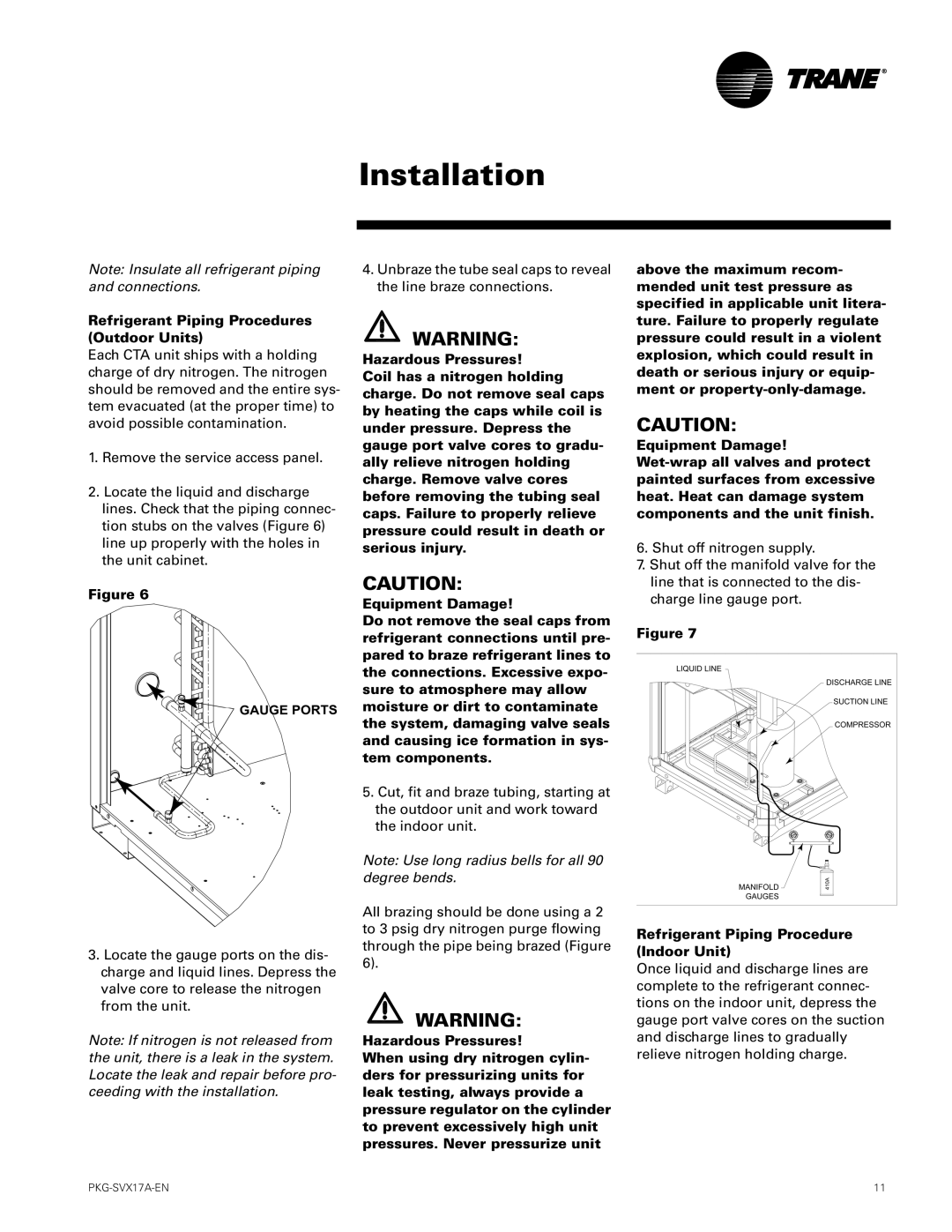PKG-SVX17A-EN specifications
The Trane PKG-SVX17A-EN is an advanced packaged air conditioning system designed for commercial applications. This unit stands out due to its robust construction, high efficiency, and user-friendly features, making it a suitable option for various building types, including offices, restaurants, and retail spaces.One of the main features of the PKG-SVX17A-EN is its high energy efficiency, which is achieved through the incorporation of variable speed technology. This technology allows the compressor to adjust its output based on the cooling and heating demands of the space, leading to reduced energy consumption and lower utility bills. Additionally, the system’s SEER (Seasonal Energy Efficiency Ratio) ratings exceed industry standards, which is beneficial for both environmental sustainability and operational costs.
The PKG-SVX17A-EN utilizes advanced refrigerant management systems that incorporate environmentally friendly refrigerants. This aligns with Trane's commitment to sustainability and compliance with global environmental regulations. The unit is also equipped with an intelligent controller that enables precise monitoring and control of temperature, humidity, and airflow. This feature ensures optimal comfort levels while maximizing efficiency.
In terms of installation, the PKG-SVX17A-EN is designed for easy integration into existing infrastructure. Its compact design allows for flexible placement and minimizes the required space, making it ideal for commercial rooftops. The unit also incorporates advanced sound dampening technologies to reduce operational noise, making it suitable for noise-sensitive environments.
Another key characteristic of the Trane PKG-SVX17A-EN is its comprehensive warranty program, which provides peace of mind to building owners and operators. This warranty covers critical components and provides access to Trane’s extensive service network, ensuring that the system remains in peak operating condition throughout its lifespan.
The PKG-SVX17A-EN is designed with user convenience in mind, featuring accessible service points for maintenance and servicing. This design minimizes downtime and ensures that system performance remains at peak levels.
In summary, the Trane PKG-SVX17A-EN packaged air conditioning system is an innovative solution for commercial environments that value efficiency, reliability, and sustainability. With its advanced technologies and thoughtful design features, it is well-equipped to meet the demands of modern commercial spaces while promoting energy savings and enhanced comfort.

